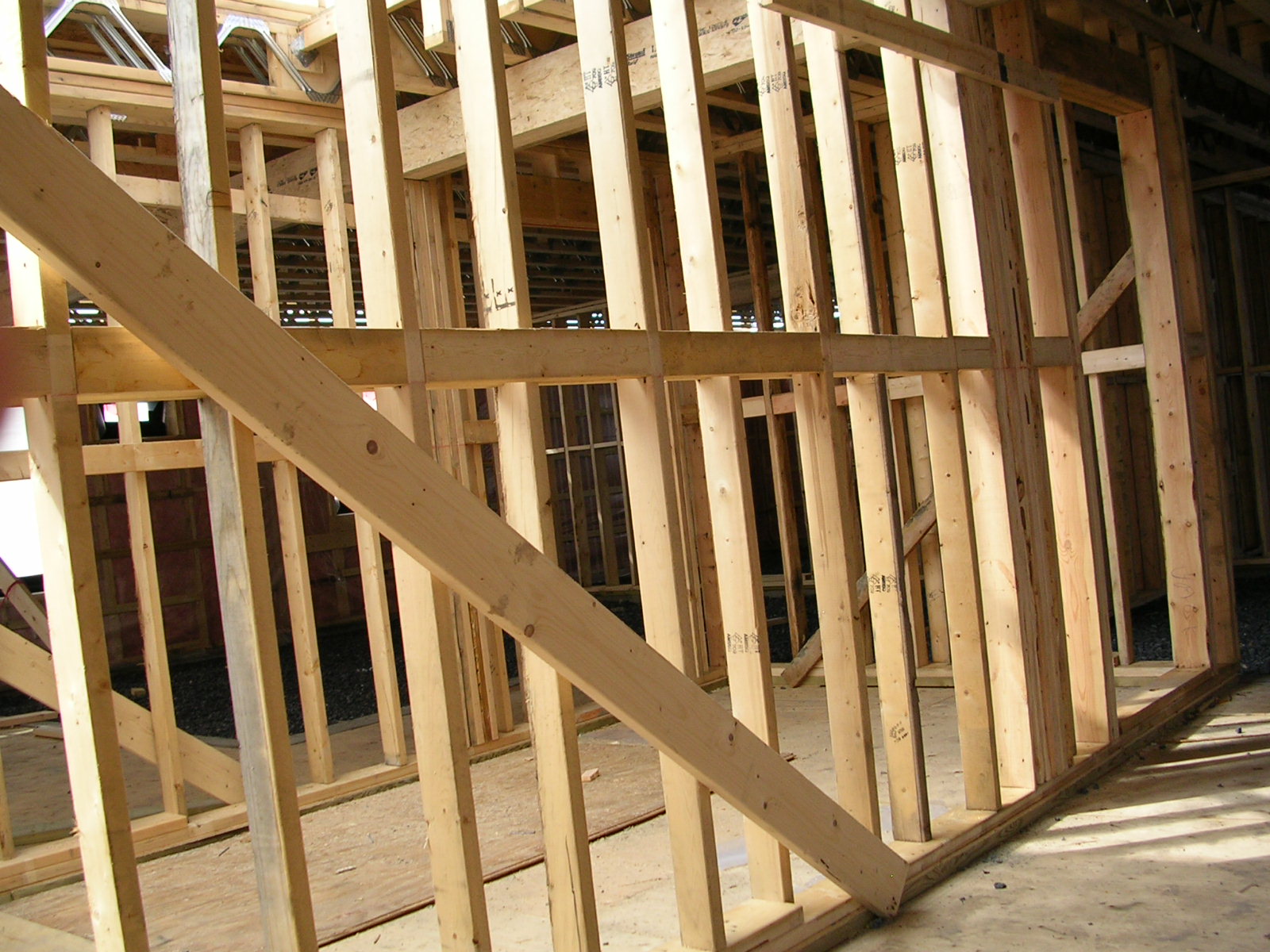 I was in construction for 8 years of my life, mostly as a roofer. Having done tons of new construction houses over the years I learned a lot about what it takes to build a house from the ground up. There’s something about being on a roof for twelve hours a day at a new construction site that gives you a birds eye view of the entire building process.
I was in construction for 8 years of my life, mostly as a roofer. Having done tons of new construction houses over the years I learned a lot about what it takes to build a house from the ground up. There’s something about being on a roof for twelve hours a day at a new construction site that gives you a birds eye view of the entire building process.
All during the time I was a roofer I was also developing sermons. As a volunteer middle school youth leader and once-in-awhile pulpit fill at a small Baptist church I learned to exegete a text at the same time I was learning to swing a hammer.
There’s a lot of parallels to building a house from the ground up to building a sermon from the text up. Here are at least seven.
1. Pick the best place to build.
Location is everything in real estate and construction. If you build a house in the wrong place it won’t sell. If you build it on the wrong type of ground it won’t last.
When it comes to Scripture you have a lot of real estate to cover. From Genesis to Revelation you want to find the best place to build your sermon.
How do you do that? You exegete your audience before you identify your text. Find out their spiritual temperament, maturity levels and other nuances before you pick which passage you are going to build on. If you already know these things because you are preaching to the same audience week in and week out then identify which particular issues they are struggling with right now. Then search for a sermon or series that will address that.
Just last week I preached at The Salvation Army National Evangelism Conference. Before I developed a sermon for them I tried to find out as much as possible about who was attending (were they youth leaders, territorial officers, lay people or a mixture?) and why they were attending (training in evangelism, inspiration for evangelism or something else?) Once I identified this I was able to start building a sermon that fit this particular audience.
You must investigate your audience before you investigate which part of the Word you are going to preach to them.
2. Make sure you have more than enough power.
Whether it be a generator or a plug in you need to have access to power if you’re going to build quickly and efficiently in the 21st Century. From air guns to buzz saws electrical power is a must.
In the same way we need to get and stay “powered up” if we are going to truly handle the Word well. The original Architect of God’s Word dwells within us to guide us and empower us as we prepare our sermon and preach His Word. We need to stay plugged into His power every step of the way so that our sermon is as effective and impacting as possible.
3. Follow the blueprints.
Builders that don’t follow blueprints build houses that break code and fall short. With God’s Word as our infallible blueprint (and the original Architect guiding us every step of the way) we can design sermons that are accurate and impactful.
We need to rightly divide the Word of God by asking the classic questions who? what? when? where? and why?
-Who was this book written to and from?
-What were the historical, cultural and religious situations of the readers and writer of this book?
-Where was it written from?
-Why was it written?
Questions like this may take time to answer but one must answer “What does this passage mean?” before they can answer “What does this passage mean for my audience?”
4. Lay the foundation.
You lay one foundation when you build a house. In the same way there is one main thing that whole passage is saying when it comes to preaching. Master preacher, Haddon Robinson, calls it the “Big Idea” of a passage. I call it the foundation.
When you identify the big idea of a certain passage you are laying the foundation for your entire sermon. Everything else is built on this one idea. If your big idea is weak then your sermon will lack authority and gravitas. If it is strong then you are preaching the Word accurately and it will have maximum impact on your audience.
5. Frame it out.
Once the foundation is laid you can frame the house out. This is when you build the structure upon which everything will be hung.
When it comes to preaching this means your main sermon points. These points become the framework that builds on the strength of your big idea and truly begin to add structure and substance to your sermon.
If my big idea from John 3:16 is “God’s love is demonstrated by Christ’s sacrifice” then my sermon points could be something like: 1) The world is the object of his love, 2) The cross is the proof of God’s love and 3) Eternal life is the result of God’s love.
…or something like that.
6. Close the gaps.
From roofing to drywalling to flooring to siding there’s a whole lot of construction that is committed to closing the gaps. From transitions to historical insights to researching commentaries there’s a lot of preaching that should be committed to closing the gaps.
A sermons must have a solid structure, build on a strong foundation and have no visible gaps. The best exegeted sermon in the world can sound horrible if a preacher doesn’t have the right transitions from point to point or has no “zingers” (unique insights) that stretch your thinking and help you see the text in a deeper, richer way.
7. Dress it up.
Last but not least are illustrations. These represent paint, carpet, tile and intricate woodwork. These can transform a house from livable to beautiful.
Use personal, historical and hysterical illustrations. Use illustrations from nature and newspapers. Use all sorts of illustrations all of the time.
Some preachers are great builders but lousy artists. They build a solid structure that is exegetically sound but nobody wants to live there because the floors are bare and it’s painted gray.
Take the extra time to add an opening illustration that grabs the heart, stretches the mind or tickles the funny bone of your audience. Pepper your sermon with stories so that you can capture and keep their attention.
And if this sounds unspiritual you can take it up with Jesus. He was the master builder and used stories to drive home theological points in ways that the average preacher today would never dare.
Yes, writing a sermon is like building a house.
So let’s start swinging those hammers!






